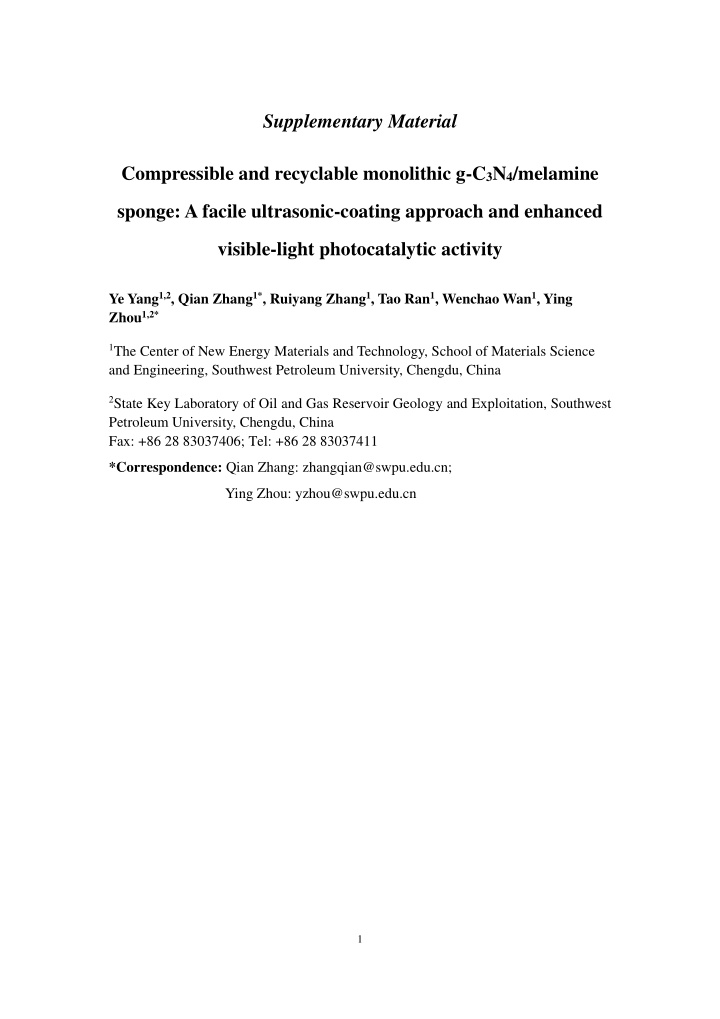



Supplementary Material Compressible and recyclable monolithic g-C 3 N 4 /melamine sponge: A facile ultrasonic-coating approach and enhanced visible-light photocatalytic activity Ye Yang 1,2 , Qian Zhang 1* , Ruiyang Zhang 1 , Tao Ran 1 , Wenchao Wan 1 , Ying Zhou 1,2* 1 The Center of New Energy Materials and Technology, School of Materials Science and Engineering, Southwest Petroleum University, Chengdu, China 2 State Key Laboratory of Oil and Gas Reservoir Geology and Exploitation, Southwest Petroleum University, Chengdu, China Fax: +86 28 83037406; Tel: +86 28 83037411 *Correspondence: Qian Zhang: zhangqian@swpu.edu.cn; Ying Zhou: yzhou@swpu.edu.cn 1
Figure S1 | (a) Photographs of melamine sponge soaked in saturated urea solution through high temperature calcining treatment; (b) the corresponding section drawing. Figure S2 | Photographs of monolith photocatalysts (a) g-C 3 N 4 /Al 2 O 3 ceramic foam; (b) g-C 3 N 4 / nickel foam; (c) g-C 3 N 4 /glass fibre; (d) g-C 3 N 4 /polyester fibre. 2
Figure S3 | (a) The simulation binding force test experimental setup of large area g-C 3 N 4 /MS sample (the distance between sample and fan is 15 cm); (b) the corresponding weight loss and loss rate (the weight of loss/ catalyst loading × 100%) of the supported samples. Figure S4 | The unit mass Arrhenius rate constants of different thicknesses g-C 3 N 4 /MS samples for the removal of NO under visible light irradiation. Figure S5 | (a) Monitoring of NO 2 intermediates over the large area g-C 3 N 4 /MS under visible light irradiation; (b) The photodegradation of NO over the large area g-C 3 N 4 /MS in visible light vs prolonged irradiation time. 3
Figure S6 | XPS valence band spectra of g-C 3 N 4 /MS. 4
Recommend
More recommend